#kashmir university
Text
This is life, atleast this would be the earliest and simplest visualisation of it. Why? It has everything- love, trust, fear, happiness, courage, effort, empathy. It doesn't have a beginning nor has an end, it is just going on. While you are driving someone is the force that gives you current.
2 notes
·
View notes
Text
Inclement Weather: Kashmir University postpones all exams on Wednesday
SRINAGAR (KIMS) — In view of the inclement weather conditions in Jammu and Kashmir, the University of Kashmir postponed all the examinations that were scheduled to be held on Wednesday (February 21, 2024).
According to a notification, Due to inclement weather conditions, all examinations of University of Kashmir which are scheduled to be held on 21st of February 2024 stand postponed.
Fresh dates…

View On WordPress
0 notes
Text
Specially-abled students university’s lifeblood: KU VC
SRINAGAR: Vice-Chancellor University of Kashmir Prof Nilofer Khan said on Friday that the varsity is committed to provide best possible facilities to its specially-abled students to aid their academic progression and overall personality development.
Speaking at a modest event organised by the Department of Students Welfare to distribute aids and appliances among specially-abled students of the…

View On WordPress
0 notes
Text

things i have to look up for this story i’m writing set in a fantasy world.
#memorie.txt#i knowwwww the cara//val universe is fictional and fantasy and whatever anything goes BUT ALSO#yes there is france in this universe. because i said so. and cameras also exist. because i said so.#and soooo that means that kashmir india exists in this universe because stephanie never said it DIDNT#and that is why azure gifts chrysi expensive cashmere blankets to keep her warm at night 🖤
4 notes
·
View notes
Text
Colonizing Kashmir: Kanjwal’s book reveals complexities of Bakshi rule
BOOK REVIEW
Iftikhar Gilani
Book: Colonizing Kashmir: State-building Under Indian Occupation
Author: Hafsa Kanjwal
Pages: 384
Publishers: Stanford University Press, California
In her recently published 384-page book, “Colonizing Kashmir: State-building Under Indian Occupation,” historian Hafsa Kanjwal delves into the intricate dynamics of Kashmir’s modern history, shedding light on the impact of…

View On WordPress
#2019#Abrogation of Article 370#Article 370#August 5#Bakshi Ghulam Mohdamad#California#Colonialism#Colonizing Kashmir#Hafsa Kanjwal#Integrating Kashmir into India#Rule Bakshi#Sheikh Mohammed Abdullah#Solidifying Indian Control over Kashmir#Stanford University Press#State Building Under Indian Occupation
0 notes
Text
ok do i understand why a lot of toddler and kid shows give characters parents and family in the military/police; "real kids in real life are in military/police families so we're just trying to be realistic", whatever
but said show runners never seem to think about the implications beyond that, or think about how kids outside of those contexts, who don't have those warm fuzzy (or even neutral) feelings, would see it
#like my niece was a toddler when disney first got their hands on bluey so ive seen a lot of the show#and every so often its mentioned that bluey's maternal granddad was in the australian army. likely in the 1970s & 80s#idr if its every specified how long he was in the army for or where he was; just that it was “in the jungle”#it could've been thailand vietnam western new guinea kashmir or where ever. and they just drop it like a casual funny thing like!#'haha granddad you're so fun show us how to camouflage ourselves with mud like when you had to hide in the jungle :)'#like. i get *why* the showrunners did stuff like this: they grew up where that sort of thing was normal* and just want to portray 'reality'#*meaning they had older family members who were in the military and were stationed overseas#however. they've never honestly *thought* about the context and reasons said family were sent overseas#and that it was terrible they were over there for reaspns beyond that they couldn't see their father in oerson for awhile#or like how steven universe (shut up) had that episode where we meet steven's racist uncle#and the showrunners were like 'its for (white) kids to relate to because we all have a relative who hates illegal immigrants'#without even taking into consideration (or just not caring) that kids of color and immigrant children would see that#im rambling but yknow what i mean?#mickey.txt
0 notes
Text
Hell in Paradise
Faisul Yaseen
On a chilly December morning, something took over J, a young baker in south Kashmir’s Anantnag district as he went on a rampage, killing his mother and two others, and leaving his father and five others injured.
“He started attacking everyone ferociously like a bear. I don’t know what happened to him. It was as if he turned mad. He even attacked me and dragged his mother along and killed her too,” J’s father says, unable to come to the grips of the tragedy that has befallen the family.
As the cold winter paved way for the blooming spring, it was déjà vu.
This time another son went bizarre in north Kashmir’s Sopore area when he strangled his mother to death.
Rewind to the blazing autumn, and we see the same tragic events unfold in Kehribal village of Anantnag.
A son, along with his friend, tried to snatch money from his mother, resulting in an argument between the mother and the son.
Infuriated, the son beats and punches his mother forcefully, resulting in her fall inside the kitchen of their house.
With the help of his friend, the son brings a big stone and hits it on his mother’s head, leaving her dead.
The heartrending story is played over and again.
What toxicity is in the air?
All the three sons involved in the gruesome murder of their mothers are said to be involved in substance abuse.
Professor at the Institute of Mental Health and Neurosciences (IMHANS), Kashmir, Dr Arshad Hussain says that though substance abuse is associated with harm to self in most instances, in some circumstances it is associated with violence to others.
“Most of the research done in the field does conclude that substance use like alcohol and cannabis are associated with increased crime rates,” he says. “They are associated with aggression which doesn’t have a stop button as drugs cut the brakes in our frontal lobes which otherwise modulate our behaviours. Rising crime rates and accidents are indirect heinous costs of rising substance use.”
*****
Narcotics is the third largest business in the world with a turnover of 500 billion US dollars, and, according to the latest World Drug Report released by the United Nations Office on Drugs and Crime (UNODC), some 35 million people globally are suffering from drug use disorders.
In Kashmir too, drug addiction is becoming a rampant phenomenon, bringing other associated crimes along.
According to the ‘The National Survey on Extent and Pattern of Substance Use in India’, one million people in a population of 12.5 million in Jammu and Kashmir have fallen to the menace of drug addiction.
What lures people in Kashmir to substance abuse?
“Various factors,” says Prof Aneesa Shafi, Head of the Sociology Department of the University of Kashmir (KU).
“Our value system getting weak, global connectivity, media, restricted entertainment sources, peer pressure, easy access to drugs, and shrinking space for expression are some factors that push people to substance abuse,” she says.
Those indulging in drug addiction mention other factors too.
K, who is in his early twenties, says that in his teens, he used to be distressed due to the expectations of his parents of excelling at studies and would often remain confined to his room.
“To complicate matters, the girl I loved turned me down,” he says.
Unable to deal with rejection and failure to shine at studies, K was drowning in the pool of depression when a friend suggested trying cannabis.
“It gave me a high,” he says. “I was hooked.”
Within sometime, K began trying other drugs like heroin that completely derailed his life.
Soon, he was a school dropout.
*****
The substance abuse in pop culture too has impacted the lives of youth.
With easy access to Over The Top (OTT) media platforms on their mobile phones, some substance abusers say that popular Hollywood movies like ‘Train Spotting’, ‘Pulp Fiction’, and ‘The Basketball Diaries’ and TV shows like ‘Narcos’ and ‘Breaking Bad’ influenced them in doing drugs.
Others say they were swayed by the mention of intoxication in poetry like Allama Iqbal’s couplet, ‘Mai ḳhana-e-Europe ke dastur nirale hain; laate hain surur avval dete hain sharab aḳhir’ or Bashir Badr’s, ‘Na tum hosh main ho na ham hosh main hain; chalo maikade main vahin baat hogi’.
Yet others say they started doing drugs for the exploration of creative processes, something that has been in discourse for long.
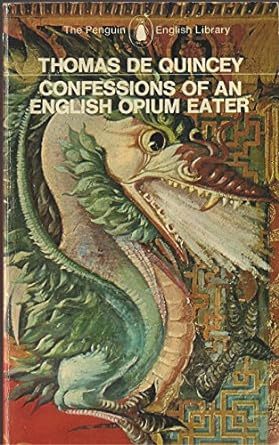
Thomas De Quincey’s ‘Confessions of an English Opium-Eater’ published in 1821 had first romanticised the link between intoxicants and artists’ careers in songs, novels, and films.
Head of the Psychiatry Department at Government Medical College (GMC), Srinagar, Dr Muhammad Maqbool Dar is of the opinion that unregulated media and social media were playing the main role in pushing youth to substance abuse.
“Youth get influenced by what keeps coming on the media and social media over and over,” he says. “More than the influence of drugs in pushing them toward crimes, copycat homicides and copycat suicides are a bigger concern.”
*****
Though the phenomenon of drug addiction in Kashmir has witnessed a surge in recent years, Kashmir has long had its tryst with substance abuse.
Seeing faith healers and traditional musicians in a state of high has been socially acceptable since long.
In their book ‘Dimensions of Drug Abuse in Kashmir: A Study of Anantnag District - A Sociological Perspective’, Shahzad Wani and Pirzada M Amin write that drug abuse has been prevalent in Kashmir society for a long time and functioned as an institution in the form of ‘Takayas’.
‘Takayas’ used to be the havens of cannabis consuming addicts in Kashmir that used to have such social acceptance that people would even send them a share from their feasts.
By the 1990s, the menace of substance abuse had started taking root in Kashmir.
In 1993, Dr Mushtaq A Margoob and Dr K S Dutta set the alarm bells ringing in their report ‘Drug abuse in Kashmir – Experience from a Psychiatric Diseases Hospital’ published in the Indian Journal of Psychiatry.
Their report stated that the menace was “touching new heights”, the situation would eventually become “explosive”, and “urgent steps” needed to be taken to curb it before it was too late.
Noted Kashmiri poet, writer, and satirist Zareef Ahmad Zareef blames the political leadership for failing to control the menace of drug addiction in the region.
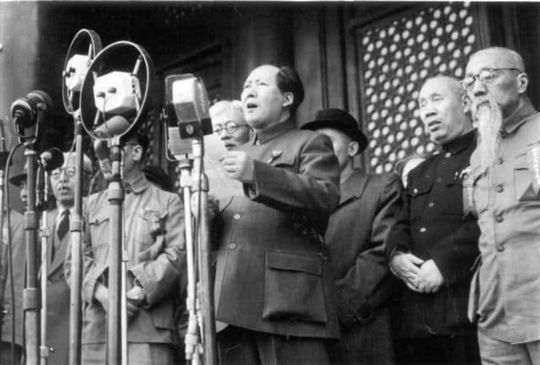
Giving the example of Mao Zedong, Chinese communist revolutionary leader and founder of the People's Republic of China, Zareef says Zedong eradicated both consumption and production of opium in China during the 1950s.
Under Zedong, 10 million addicts were forced into compulsory treatment, dealers were executed, and new crops planted in opium-producing areas.
*****
The situation regarding substance abuse has gone so bad now that a recent study done by the Psychiatry Department of GMC, Srinagar revealed that Kashmir had surpassed Punjab in drug abuse cases and was currently positioned at number two among top drug abuser regions in India not far behind Northeast.
According to the study, a whopping 33,000 syringes are used to inject heroin by drug abusers in Kashmir every day.
The worrying sign is that most drug abusers are in the age group of 17 to 33 years and unemployed.
The study says that on an average, a single drug abuser spends Rs 88,183 every month on substance abuse.
The COVID-19 pandemic also complicated the matters.
According to doctors, the substance abuse among the addicts increased during the pandemic because of boredom due to lockdown.
With the ‘dark web’, tech-savvy youth have easy access to illicit drugs.
*****
As youth continue to fall into the rabbit hole of substance abuse, calls for awareness and rehabilitation are growing shriller.
A study ‘Drug Addiction Causes and Awareness among people of Pulwama District of Jammu and Kashmir State’ by Tahira Sidiq, Bilal Ahmad Bhat, Nusrat, and Feroz Ahmad Wani in the Saudi Journal of Biomedical Research says that 94.17 percent respondents they surveyed were not aware of the process of drug de-addiction.
The study urges society elders and religious leaders to come forward and support people who want to eliminate drug abuse from J&K.
*****
As drug abusers frequently feel alone and alienated, religion plays a role in providing spiritual assistance and builds their capacity to overcome this problem.
The holy Quran has several references against intoxication.
Chapter 2 (Al-Baqarah), Verse 219 states: “They ask you about wine and games of chance. Say: ‘In both these there is great evil, even though there is some benefit for people, but their evil is greater than their benefit.’”
Chapter 4 (An Nisa) Verse 43 states: “Believers! Do not draw near to the Prayer while you are intoxicated until you know what you are saying nor while you are defiled - save when you are travelling - until you have washed yourselves.”
Chapter 5 (Al-Maidah), Verses 90-91 state: “O believers! Intoxicants, gambling, idols, and drawing lots for decisions are all evil of Satan’s handiwork. So shun them so you may be successful. Satan’s plan is to stir up hostility and hatred between you with intoxicants and gambling and to prevent you from remembering Allah and praying. Will you not then abstain?”
There is also mention against intoxication in the Hadith.
Al-Bukhari (4087) and Muslim (1733) narrated that Abu Musa said: “The Prophet (SAW) sent Muadh ibn Jabal and me to Yemen, and I said: O Messenger of Allah, there is a drink that is made in our land and is called al-Mizr, which is made from barley, and another drink called al-Bit, which is made from honey. He said: “Every intoxicant is haram.”
Al-Bukhari (4343) and Muslim (3032) narrated that Ibn Umar said: “I heard Umar say from the minbar of the Messenger of Allah (SAW): “O people, the prohibition of khamr was revealed when khamr was made from five things: grapes, dates, honey, wheat and barley. Khamr is whatever befogs the mind.”
*****
Kashmir lacks proper facilities for rehabilitating drug users and lack of knowledge regarding drug addiction, detoxification, and rehabilitation.
The governmental agencies, educational institutions, NGOs, and other social work organisations need to scale up their awareness programmes.
As some substance abusers die of overdose while some commit suicide when they become hopeless, parent and care knowledge also needs to improve.
Professor in the Department of Psychiatry IMHANS, Kashmir, Dr Yasir Rather says there are Addiction Treatment Facilities (ATFs) in all district hospitals of J&K.
“However, there is also a need for long-term rehabilitation centers that would provide comprehensive treatment – a combination of medical, psychological, and social services to help individuals overcome their addiction and regain control of their lives,” he says.
Though the crackdown of law-enforcing agencies’ against drug traffickers has been welcomed, people are also suspicious at times.
When former Punjab chief minister Captain Amrinder Singh spoke about the drug menace in 2018, he told Hindustan Times, “One new source of drugs is Kashmir despite so much security.”
However, SSP J&K Anti-Narcotic Task Force (ANTF) Vinay Kumar says that policing related to narcotics and awareness was getting better.
“Every year, we used to register around 22 to 23 cases under the Prevention of Illicit Traffic in Narcotic Drugs and Psychotropic Substance Act, 1988, however, in the year 2022 we registered 235 cases under PITNDPSA,” he says.
Kumar feels that as Police are getting teeth to seize the financial assets and properties of the repeated offender, the results on the ground are getting better.
Stressing that while the Union Ministry of Social Justice and Empowerment had informed the Lok Sabha that 4.6 percent of J&K population was involved in substance abuse, he says that according to IMHANS, Srinagar, only 2.5 percent of Kashmir population was involved.
Kumar says that the first priority of the Police Department was to take action against those working on the inside of the organisation for drug smugglers.
“Cases have been registered against BSF officials, CRPF officials, and Police officials. Five to six Police officials were chargesheeted in a single case,” he says.
While dealing strongly with drug traffickers is a welcome development, there is a need to treat substance abuse as a disease and drug addicts as diseased, rather than criminals.
*****
L, a youth who has been sober for the past 2 years after being a chronic addict for over 5 years says he owes his recovery to his parents and medics who treated him.
“If my parents wouldn't have been understanding, I would never have been able to come out of this abyss,” L says. “If I could fight addiction, anyone can.”
Greater Kashmir
#imhans#unodc#university of kashmir#ott#allama iqbal#bashirbadr#thomas de quincey#gmc#zareef ahmad zareef#ma zedong#covid-19#dark web#quran#al baqarah#al nisa#al maidah#al bukhari#hadith#punjab#captain amrinder singh#antf#PITNDPSA#bsf#crpf#police#union ministry of social justice and empowerment#ngos#ibn umar#abu musa#anantnag
1 note
·
View note
Text

Love when maps have indistinguishable territory shadings
#eben talks#the book is Kashmir in the aftermath of partition by shahla hussain#written 2021 Cambridge university press
0 notes
Text
youtube
0 notes
Text
Download Previous Year Entrance Papers of Kashmir University
Download Previous Year Entrance Papers of Kashmir University
Previous Year Entrance Papers of Kashmir University
If you are one among thousands of aspiring candidates who wish or are planning for KU Entrance Test 2022-2023 and want to download Previous Year Entrance Papers of Kashmir University. Then stay back and have it all in front of you in no time. Here at our portal, you can easily download Previous Year Question Papers of KU.
Read Also:
Kashmir…
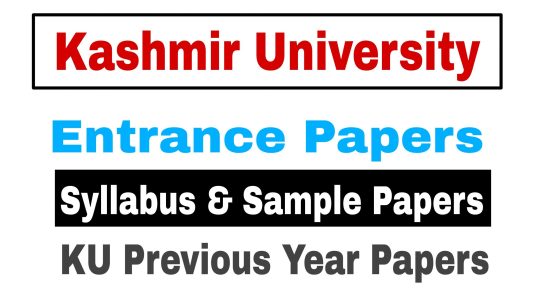
View On WordPress
#Entrance papers 2022#Entrance papers of Kashmir university#Kashmir university entrance papers 2023#Kashmir university Pg entrance papers#Kashmir University Question Papers 2023
0 notes
Link
B Ed from Kashmir University, B Ed From Kashmir, B Ed course from Kashmir, Kashmir B Ed, CITM
0 notes
Text
Kashmir University. This is maple leaf of Kashmir, this is poetry, poetry in visuals. 07-11-2022

1 note
·
View note
Text
Inclement Weather: Kashmir University postpones exams till Feb 20
SRINAGAR (KIMS) — In view of the inclement weather conditions in Jammu and Kashmir, the University of Kashmir postponed all the examinations till February 20.
According to a notification, the University of Kashmir on Monday said that all the examinations of the varsity scheduled to be held today (February 19) and tomorrow (February 20) are postponed.
Fresh dates for the conduct of postponed…

View On WordPress
0 notes
Text
KU issues updated PG Entrance Test date-sheet
Srinagar: The University of Kashmir has issued the updated date-sheet for entrance examination for various PG programmes which is being held from May 26, 2023.The entrance test will be held in three sessions (Morning, Afternoon and Evening) at various centers of the Main Campus of the University only, according to the date-sheet issued by Directorate of Admissions and Competitive Examinations…
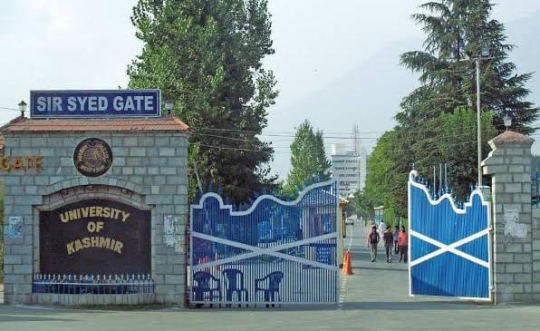
View On WordPress
0 notes
Text
Kashmir University Formally Announces Summer Break
Kashmir University Formally Announces Summer Break
Kashmir University Formally Announces Summer Break
Srinagar, Jul 15: University of Kashmir on Friday formally announced summer vacations for main campus and its satellite campuses – which as per a notification are scheduled to start from July 23, 2022.
“This is for the information of all concerned that the Teaching Departments of the University and its satellite campuses shall observe summer…
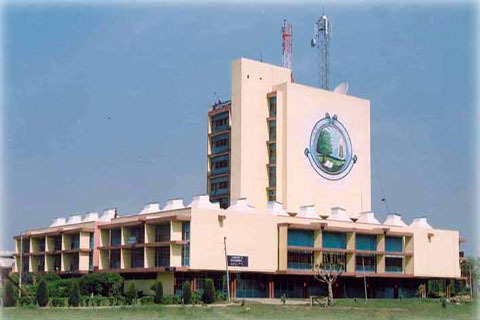
View On WordPress
0 notes
Text
What's the process of Election for president in India?
The President of India is elected indirectly by an electoral college comprised of elected members of both houses of parliament, elected members of the legislative assemblies of the 28 states, and elected members of the legislative assemblies of the union territories of Delhi, Puducherry, and Jammu and Kashmir. As of 2022, the electoral college consists of 776 MPs and 4,123 MLAs.
The system gives these electoral college members varied numbers of votes such that the overall weight of MPs and MLAs is about equal and the voting power of states and territories is proportionate to their population. Overall, 1,098,903 votes were cast by members of the electoral college, yielding a majority of 549,452 votes.
#President#India#news#jammu and kashmir#kashmir#jammu kashmir#kashmiri pandits#srinagar#jammu#union territories#delhi temperature#delhi police#delhi capitals#delhi university#delhi heatwave#india#gujarat#kejriwal#bjp#haryana#president gotabaya rajapaksa#president polls#president muhammadu buhari#minister#leaders#urges#votes#president zelensky#meeting#president biden
0 notes